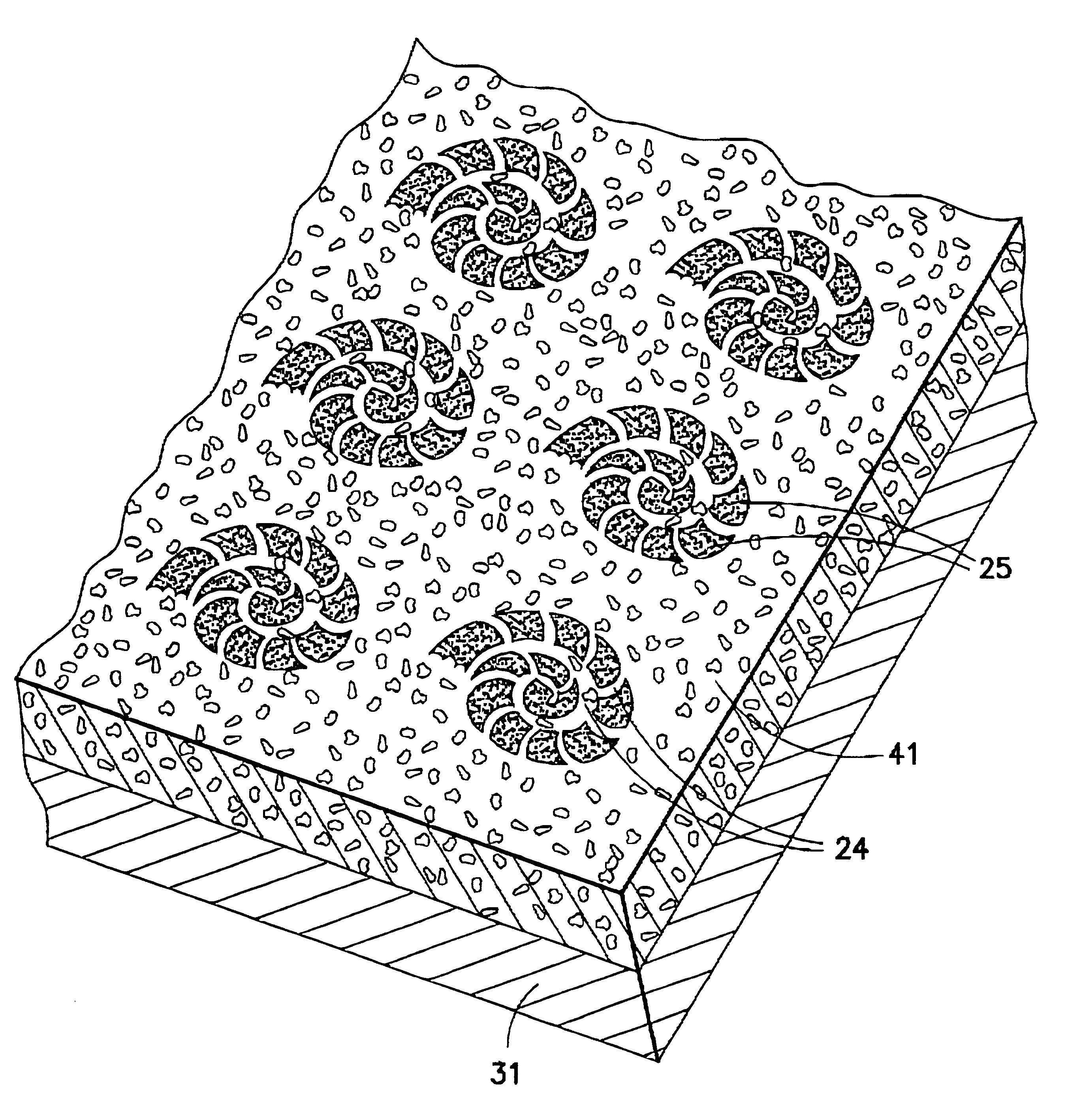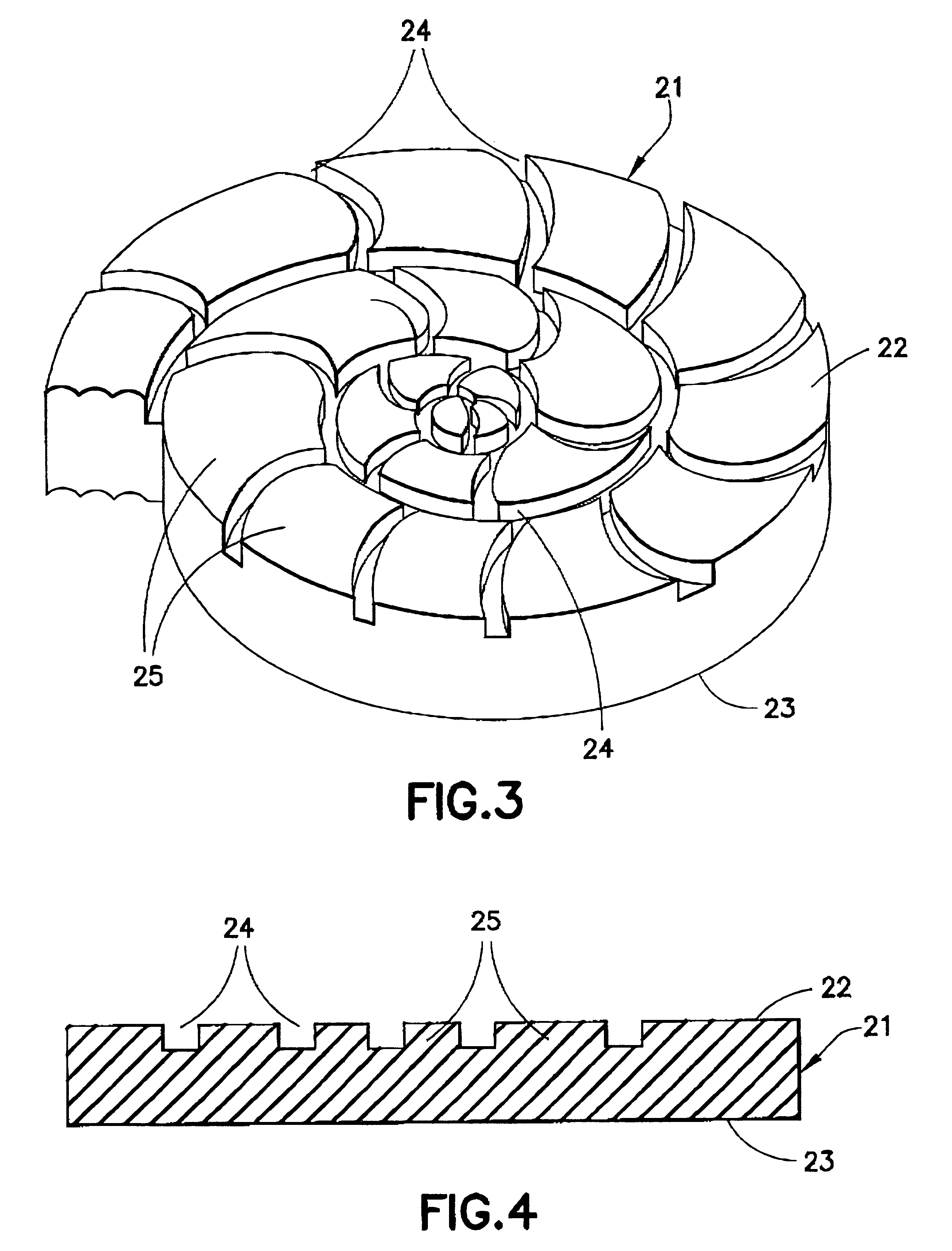Method of making monolithic terrazzo floors having seamlessly integrated inlays
a technology of terrazzo floors and inlays, applied in the field of wall or floor coverings, can solve the problems of high labor intensity, time-consuming and expensive manufacture, and inability to embed inlays with detailed and complex design patterns, and achieve the effect of improving the quality of terrazzo floors and reducing labor intensity
- Summary
- Abstract
- Description
- Claims
- Application Information
AI Technical Summary
Problems solved by technology
Method used
Image
Examples
Embodiment Construction
A preferred embodiment of the present invention includes the following steps:
(a) Preparing a mold for making epoxy inserts: An insert mold 1, as shown in FIG. 1 and FIG. 2, can be made of any suitable material that provides easy separation of the mold from the cured insert. The mold is preferably made of silicone rubber, although other soft rubber may be advantageously used. Indeed any readily deformable material that does not adhere to the material of the insert will be satisfactory. The mold has a cavity 2 that receives the material, preferably to fill the cavity. The mold cavity is preferably designed to have one or more of ridges 3 projecting from the cavity's bottom surface 4 into the cavity. Those ridges will generate complementary grooves 24 on the upper surface of the molded insert as shown in FIG. 3. The particular shape and design of the mold forms no part of the invention, and any shape and design may be employed without departing from the invention.
(b) Preparing Inserts:...
PUM
| Property | Measurement | Unit |
|---|---|---|
| Color | aaaaa | aaaaa |
| Height | aaaaa | aaaaa |
Abstract
Description
Claims
Application Information
 Login to View More
Login to View More - R&D
- Intellectual Property
- Life Sciences
- Materials
- Tech Scout
- Unparalleled Data Quality
- Higher Quality Content
- 60% Fewer Hallucinations
Browse by: Latest US Patents, China's latest patents, Technical Efficacy Thesaurus, Application Domain, Technology Topic, Popular Technical Reports.
© 2025 PatSnap. All rights reserved.Legal|Privacy policy|Modern Slavery Act Transparency Statement|Sitemap|About US| Contact US: help@patsnap.com



